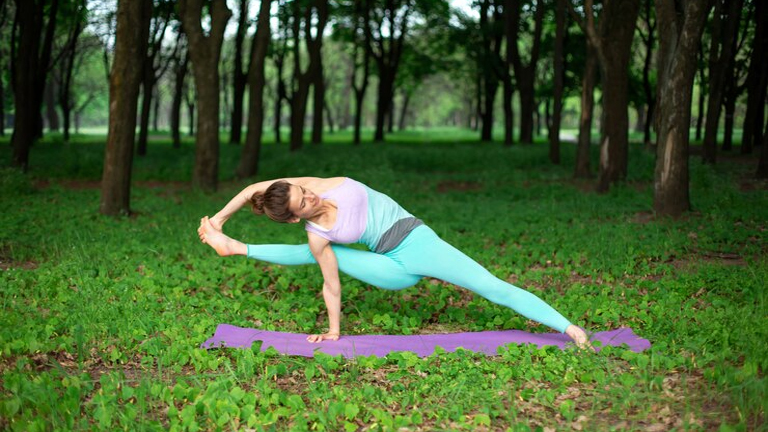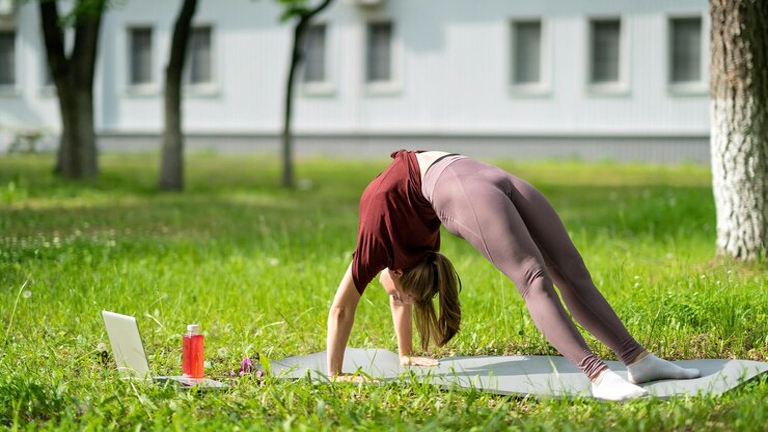Athletes constantly push their bodies to the limit, whether through intense training, competitive sports, or endurance workouts. While strength and speed are crucial, recovery and flexibility often determine long-term success. This is where yoga for athletes comes in—a powerful tool to enhance performance, speed up muscle recovery, and prevent injuries.
From NBA stars to marathon runners, more athletes are incorporating yoga into their routines. But how exactly does yoga benefit athletic performance? And which poses are most effective for recovery and flexibility? Let’s dive in.
Fitness Enthusiasts Seek Injury-Free Training
Injuries are a major setback for any athlete. Muscle strains, joint pain, and ligament tears can sideline training for weeks or even months. Traditional workouts often focus on building strength and endurance but neglect mobility and balance—key factors in injury prevention.
Yoga for runners, weightlifters, and other athletes helps by:
-
Improving flexibility – Reduces stiffness and increases range of motion.
-
Enhancing balance & coordination – Prevents falls and misalignments during training.
-
Promoting muscle recovery – Increases blood flow to sore muscles, reducing DOMS (Delayed Onset Muscle Soreness).
-
Strengthening stabilizing muscles – Protects joints and reduces overuse injuries.
Unlike high-impact workouts, yoga offers a low-risk way to maintain fitness while aiding recovery.
Best Yoga Poses for Gym-Goers & Athletes
Whether you’re a weightlifter, cyclist, or soccer player, these post-workout yoga poses can help with muscle recovery and flexibility:
1. Downward-Facing Dog (Adho Mukha Svanasana) Yoga for Athletes
-
Benefits: Stretches hamstrings, calves, and shoulders while relieving tension in the spine.
-
Ideal for: Runners, basketball players, and anyone with tight lower-body muscles.
2. Pigeon Pose (Eka Pada Rajakapotasana) Yoga for Athletes
-
Benefits: Opens the hips, releases glute and hip flexor tension.
-
Ideal for: Cyclists, soccer players, and weightlifters who experience tight hips.
3. Child’s Pose (Balasana) Yoga for Athletes
-
Benefits: Relaxes the back, shoulders, and neck while calming the nervous system.
-
Ideal for: Post-workout recovery and stress relief.
4. Standing Forward Bend (Uttanasana) Yoga for Athletes
-
Benefits: Stretches the hamstrings and lower back, improving flexibility for squats and deadlifts.
-
Ideal for: Powerlifters and CrossFit athletes.
5. Supine Twist (Supta Matsyendrasana) Yoga for Athletes
-
Benefits: Relieves spinal tension and improves mobility in the torso.
-
Ideal for: Golfers, tennis players, and anyone with rotational movements in their sport.
Incorporating these poses into a yoga for muscle recovery routine can significantly reduce soreness and enhance performance.
 How Yoga Improves Athletic Performance (Studies on NBA/NFL Players)
How Yoga Improves Athletic Performance (Studies on NBA/NFL Players)
Research shows that yoga isn’t just for relaxation—it directly enhances athletic performance. Studies on professional athletes reveal:
-
NBA Players: Many basketball teams, including the Los Angeles Lakers and Miami Heat, use yoga to improve flexibility, balance, and breathing control. LeBron James and Kevin Love credit yoga for their longevity in the league.
-
NFL Athletes: Football players use yoga to increase hip mobility, core stability, and injury resilience. Tight hips can lead to hamstring pulls, a common issue in the NFL.
-
Olympic Athletes: Gymnasts, swimmers, and track athletes integrate yoga to maintain peak flexibility and mental focus.
A study in the Journal of Strength and Conditioning Research found that athletes who practiced yoga improved their balance and endurance more than those who only did traditional stretching.
Yoga vs. Static Stretching—Which Is Better?
Many athletes rely on static stretching (holding a stretch for 20-30 seconds) before or after workouts. But how does it compare to yoga?
| Aspect | Yoga | Static Stretching |
|---|---|---|
| Flexibility | Dynamic & active stretches improve mobility over time. | Short-term relief but limited long-term benefits. |
| Strength | Builds stability through isometric holds. | No strength component. |
| Recovery | Enhances blood flow & reduces muscle soreness. | Helps temporarily but doesn’t engage full muscle groups. |
| Mind-Body Connection | Improves focus and breathing control. | No mental benefits. |
For athletes, yoga offers a more holistic approach—combining flexibility, strength, and mental clarity.
Final Thoughts: Why Every Athlete Should Practice Yoga
Whether you’re a weekend warrior or a professional competitor, yoga for athletes is a game-changer. It:
✔ Speeds up muscle recovery
✔ Enhances flexibility and mobility
✔ Reduces injury risk
✔ Boosts mental focus and endurance
Start with just 10-15 minutes of post-workout yoga and notice the difference in your performance. Your body (and your coach) will thank you!
FAQs
Q: How often should athletes do yoga?
A: 2-3 times per week for optimal recovery and flexibility.
Q: Can yoga replace stretching?
A: Yoga is more dynamic and effective than static stretching alone.
Q: Which yoga style is best for athletes?
A: Vinyasa (flow) for mobility, Yin Yoga for deep stretching, and Restorative Yoga for recovery.
By integrating yoga for runners, weightlifters, and all types of athletes, you’ll train smarter, recover faster, and perform at your best. 🚀

